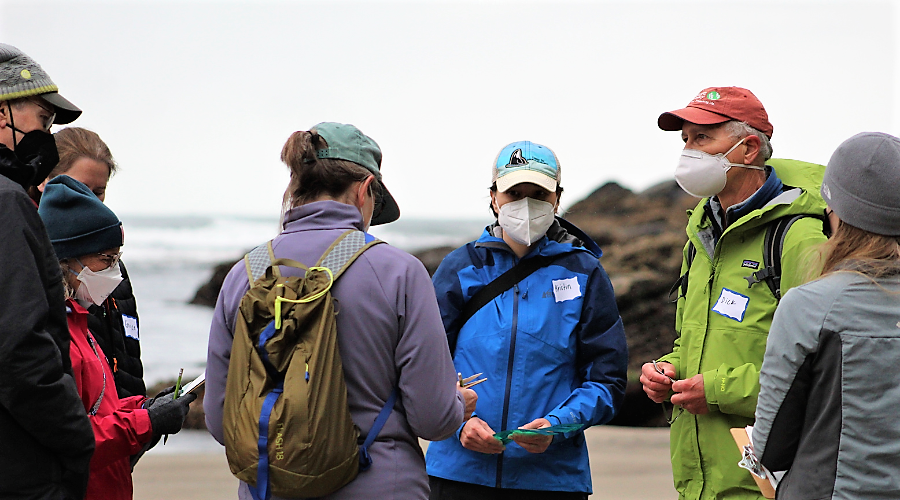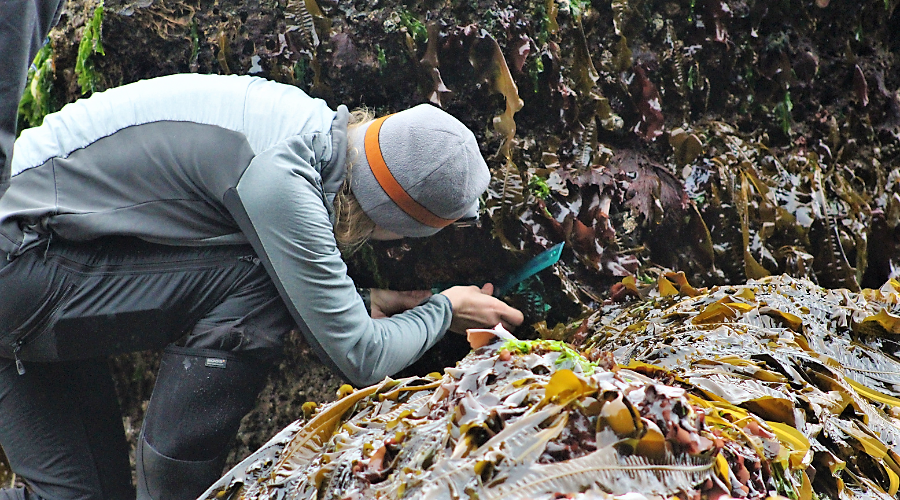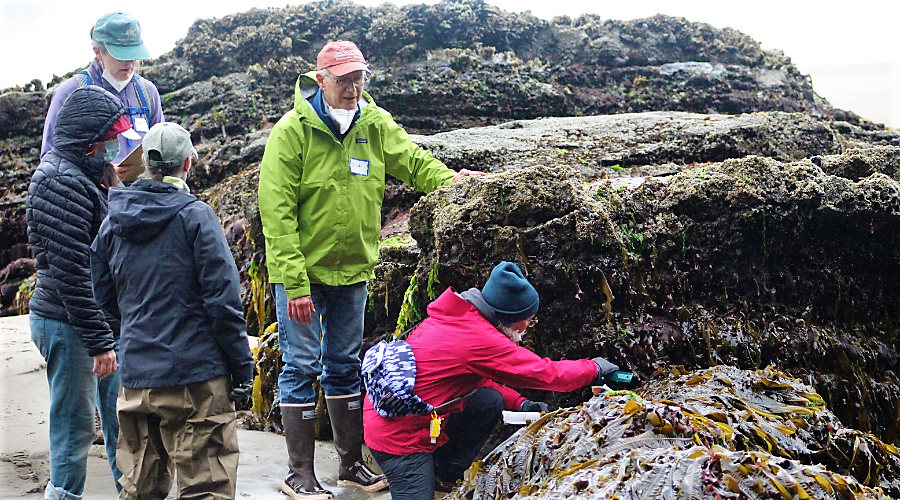
The Marine Reserve Program of North Coast Land Conservancy held a training for sea star surveying at Cape Falcon Marine Reserve in April.
To help monitor the health of sea star populations on the Oregon Coast, the Marine Reserve Program of North Coast Land Conservancy conducted sea star surveys at Cape Falcon Marine Reserve with the help of volunteers this summer.
The program—which was in partnership with the Multi-Agency Rocky Intertidal Network (MARINe)—kicked off April 16 with a training at Oswald West State Park’s Short Sand Beach, where the sea star surveys were conducted. The volunteers visited the beach for their first shift on May 20, returning monthly throughout the summer. The last survey was completed Aug. 12.
The data gathered from these surveys enables the MARINe collective to assess the long-term, broad-scale impact of Sea Star Wasting Syndrome (SSWS)—or sea star wasting disease—on sea star populations and make predictions about recovery.
Sea stars are a keystone species, or an organism that helps hold marine ecosystems together.
“When a keystone species dies, it significantly changes the ecology of the area,” says Jesse Jones, who works as the Oregon Shores Conservation Coalition’s CoastWatch Program Volunteer Coordinator. This is known as trophic cascade.
Not only are sea stars a keystone species and significant predators, but they are also vibrant, well-beloved and iconic tide pool creatures.
“People see them and they love them,” Jesse says.
Sea Star Wasting Syndrome Sparks Community Science
The initial sea star wasting event on the western coast of the U.S. took place in 2013. In an effort to determine the cause of the disease, scientists reached out to volunteers along the coast to start observing sea stars—particularly sick sea stars—in rocky intertidal zones.
They’ve theorized that the disease could be due to a virus, warming ocean temperatures, bacteria in the water, ocean acidification, or a mixture of those and other factors, but there is not yet a definitive answer, Jesse says.
After the die-off in 2013, MARINe and other organizations began establishing new long-term monitoring sites, with a focus on Oregon’s marine reserves and other protected areas.
“It really kick-started this community science engagement,” Jesse says.
The newest long-term monitoring site is at Cape Falcon. It was established in the spring of 2022; this is the first summer that sea star surveys took place at the site.

Volunteers measure the size of sea stars at monitoring sites using a soft ruler.
How Does a Sea Star Survey Work?
For NCLC’s marine program, volunteers signed up for at least three shifts of three hours each. The shifts were scheduled around minus-tides events at Short Sand Beach.
In small teams, the volunteers surveyed the rocks, looking to find, identify and measure sea stars using a soft ruler. Sea stars are measured from the center of their body to the tip of their arm. Volunteers also took photographs of any stars that seemed to be wasting.
Information on the sizes and types of sea stars, as well as whether they are sick or healthy, is returned to MARINe. The MARINe website contains a sea star map, updates, news and other resources.
“Scientists are looking at that data,” Jesse says. “They’re looking at trends, they’re looking at recovery, they’re looking at density in specific areas on the coast.”

Volunteers visited the monitoring site at Cape Falcon Marine Reserve every month this summer.
The Return of Sea Stars
Volunteering for surveys at long-term monitoring sites, such as Cape Falcon Marine Reserve, is just one way individuals can contribute to community science regarding sea stars on the Oregon Coast. The other is through documentation that is more informal.
Whenever someone is out walking in rocky habitats, they can make sea star observations and submit the information to CoastWatch. These observations can take place any time of the year.
“I’m a huge fan of the public helping science in careful ways,” Jesse says.
Between both types of monitoring, some new information is emerging that is encouraging. According to Jesse, “The one thing that is really obvious is that the sea stars are returning. Over the past seven years, many sites that had lost sea stars have regained them.”
However, there are still gaps in knowledge, such as why the disease spread in the first place and why the sea stars are recovering. That’s why long-term data collection is incredibly beneficial.
“It’s a great thing that we have these surveys going on,” Jesse says.
To learn what physical signs indicate a sea star has SSWS, so you can make observations, visit the MARINe website.
Comments